
"Sharing information is a researcher's way of life":
Targeting strategy for researchers, an event report
“Sharing information is a researcher’s way of life”: Targeting strategy for researchers, an event report
The University of Tsukuba URA (University Research Administrator) Research Administration/Management Office supports researchers with areas such as research strategy planning and fundraising.
On March 26th, 2019, it held an event titled, “Targeting Strategy for Researchers: Four Experts’ Thoughts on How to Conveying Value By Sharing Information,” in collaboration with Loftwork, which ran a three-month-long workshop examining researchers’ information distribution.
Researchers are increasingly finding themselves facing competition from around the world. In order to stand out on the global stage, it is necessary for them to consider not only the intrinsic value of their research, but also how to strategically share this information.
The goal of this event was to share ways to do this, through discussions by four speakers who are active as journal editors, interdisciplinary facilitators, investors, and researchers. What should researchers communicate to others within their field, and what should they convey to businesses and the public? There was a great exchange of opinions among the researchers in attendance.
Covered and written by Shinya Yashiro.
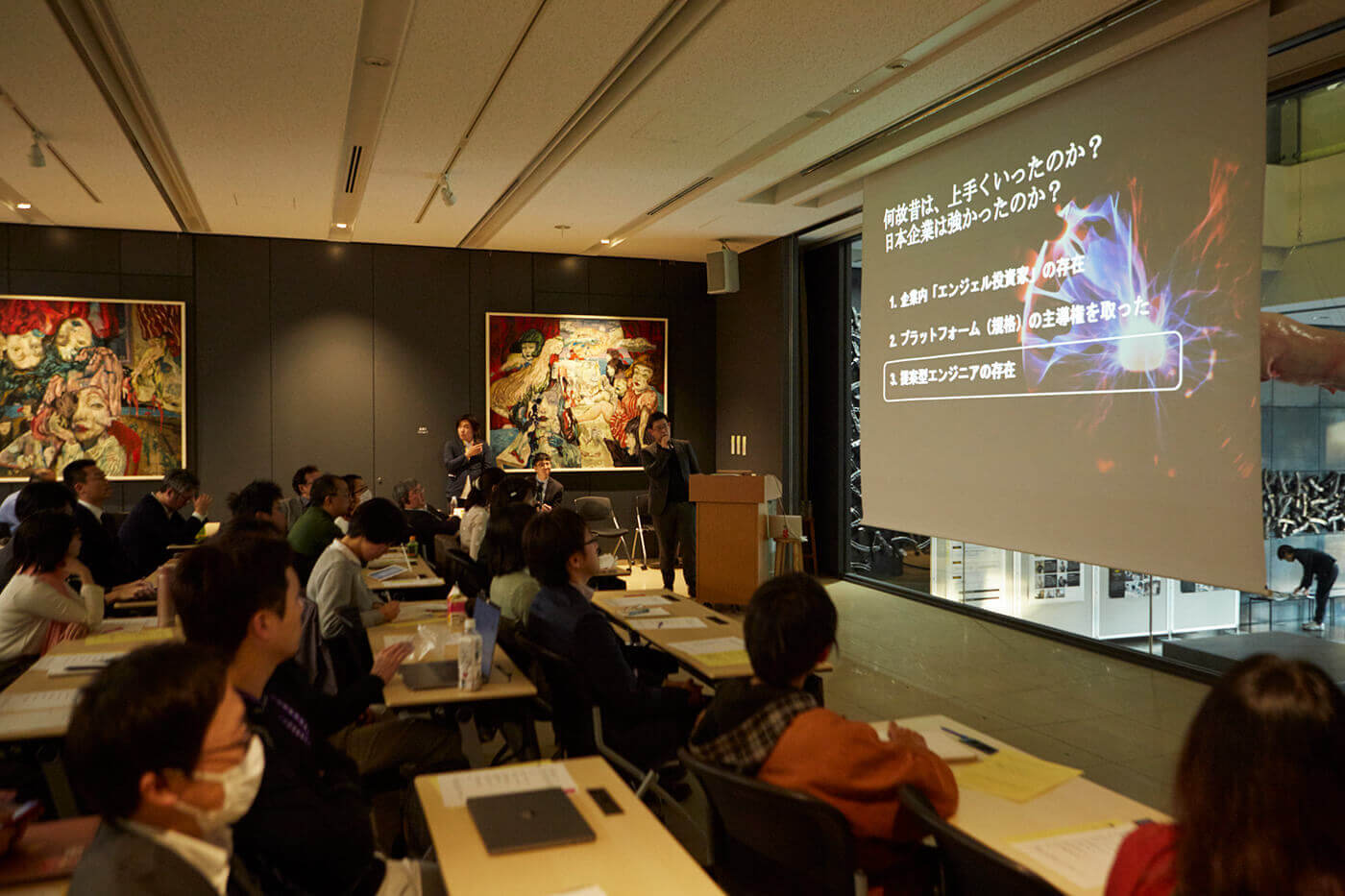
First presentation: Hideyuki Kato (University of Tsukuba); Is there any value in research results that don’t reach anyone?
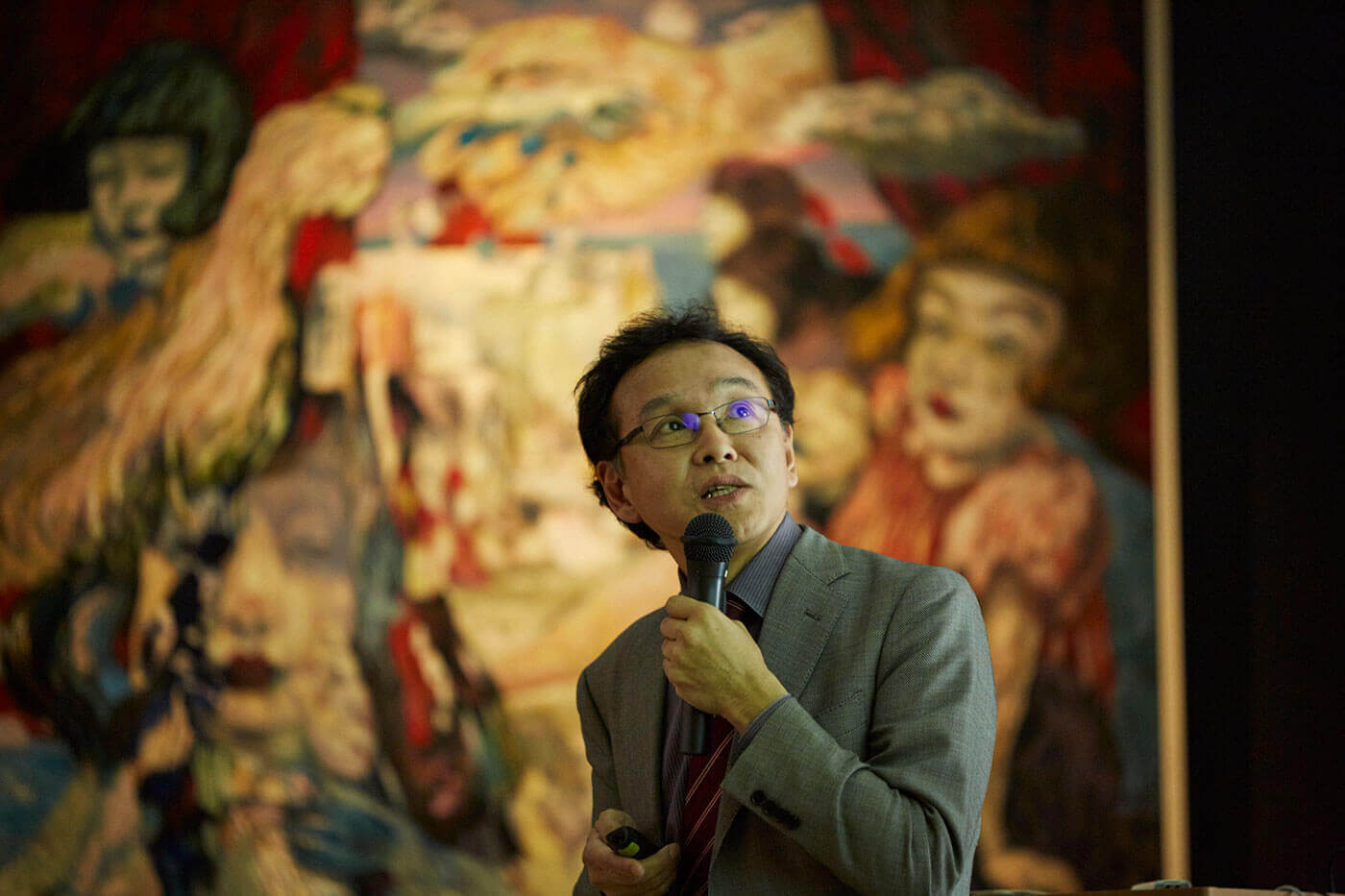
Chief Research Administrator of the University of Tsukuba URA Research Administration/Management Office. In 1992, he obtained his DSc in elementary particle theory at Tokyo Metropolitan University and became a postdoctoral research fellow at the University of Tokyo. From 1994, he began researching brain data processing at RIKEN. After spending time as a project researcher at Tamagawa University, he began numerical research under an electrophysiologist at the Center for Neural Science at New York University in 2002. He returned to Japan in 2005, becoming a deputy team leader at RIKEN BSI, then set up his own laboratory at the RIKEN BSI–Toyota Collaboration Center in 2007, developing data processing techniques based on precise measurements of the brain's data processing mechanisms (AI). He began his current position in 2012.
──To begin the event, Hideyuki Kato, from the University of Tsukuba URA Research Administration/Management Office, explained the role of URAs, who assist researchers, and shared some of the challenges he faces as someone in this role.
Kato: “A URA’s role is to help improve a researcher’s ability to conduct research. Most people think of this as securing research funding, but beyond this, the role involves offering multifaceted support, such as helping researchers increase the time they have available for research and opportunities for collaboration, thus enabling a researcher to reach his or her highest potential. Research funds are a means, not the goal, and I think it’s important not to get the two mixed up.
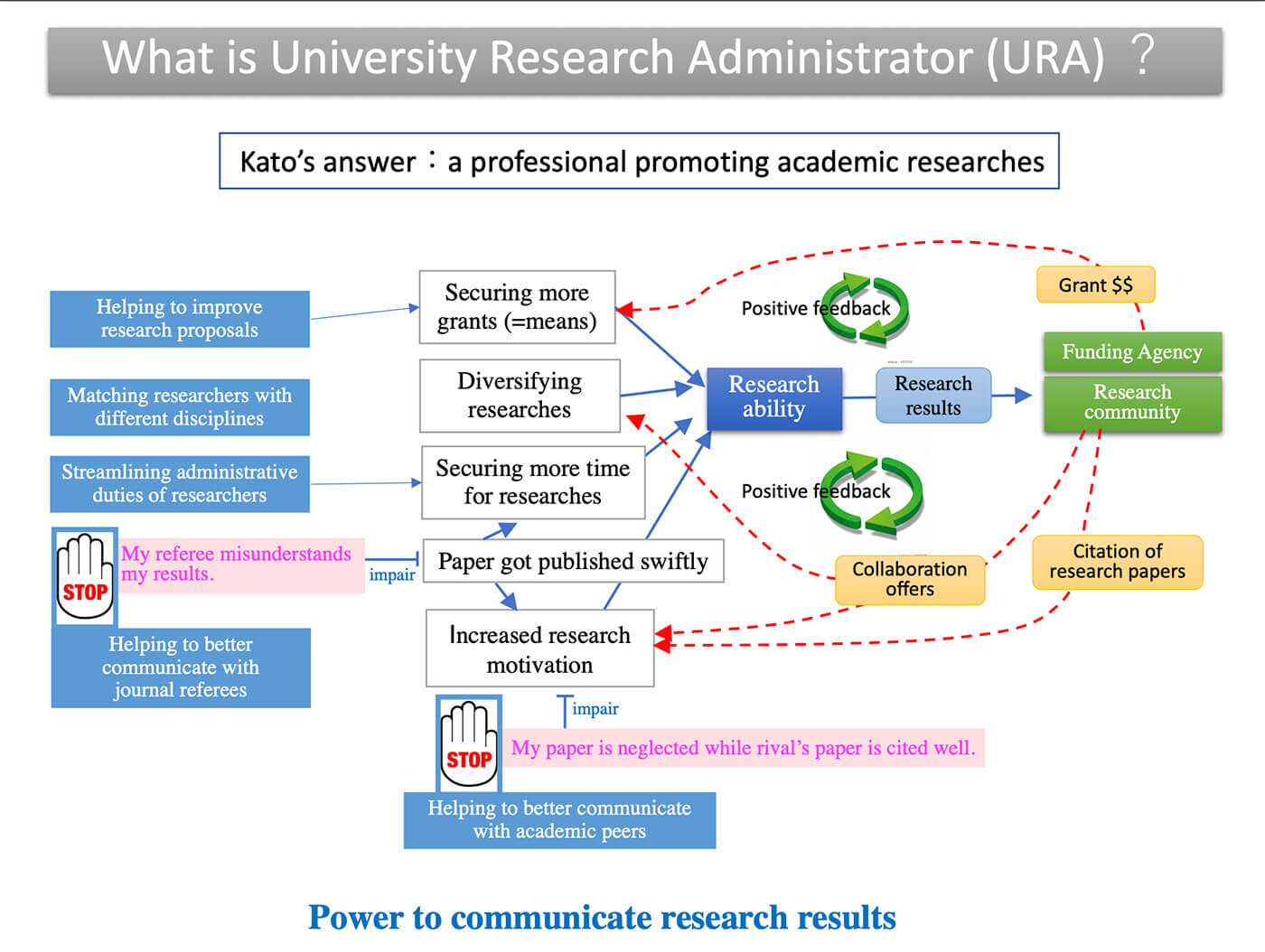
“The significance of research manifests in the sharing of the results – published as an article – with the world and the intellectual influence it has on other researchers, but there is still an unfortunate tendency for articles written by European and American authors to be more widely read. Therefore, one of the URA’s key roles is to support researchers in improving their ability to share their results widely and effectively with the world.
“Even if you belong to a Japanese university, I believe it is possible to overcome this type of disadvantage. With researchers at this establishment, we have carefully considered research distribution strategies and compiled them into today’s event.
“There are many things you can do to overcome this disadvantage. For example, you can attend international conferences to meet and share your results with as many people who might review or cite your work as possible. There are also things you can do to avoid being outshone by your rivals. Even if you are unable to publish your research in a high impact journal, there are ways to get your research seen by those who should read it and increase the number of citations.”
──Kato explained that in order to share information strategically, it is important to first get in touch and share the work with someone who will become a key person in the further distribution of your work. I look forward to seeing the effect of the URAs’ efforts on researchers in the future.
The next presentation was by Yohei Yamamoto (University of Tsukuba), who is actively developing laser materials and his business while also carrying out research on luminescent materials.
Second presentation: Yohei Yamamoto (University of Tsukuba); Sharing information to get people involved
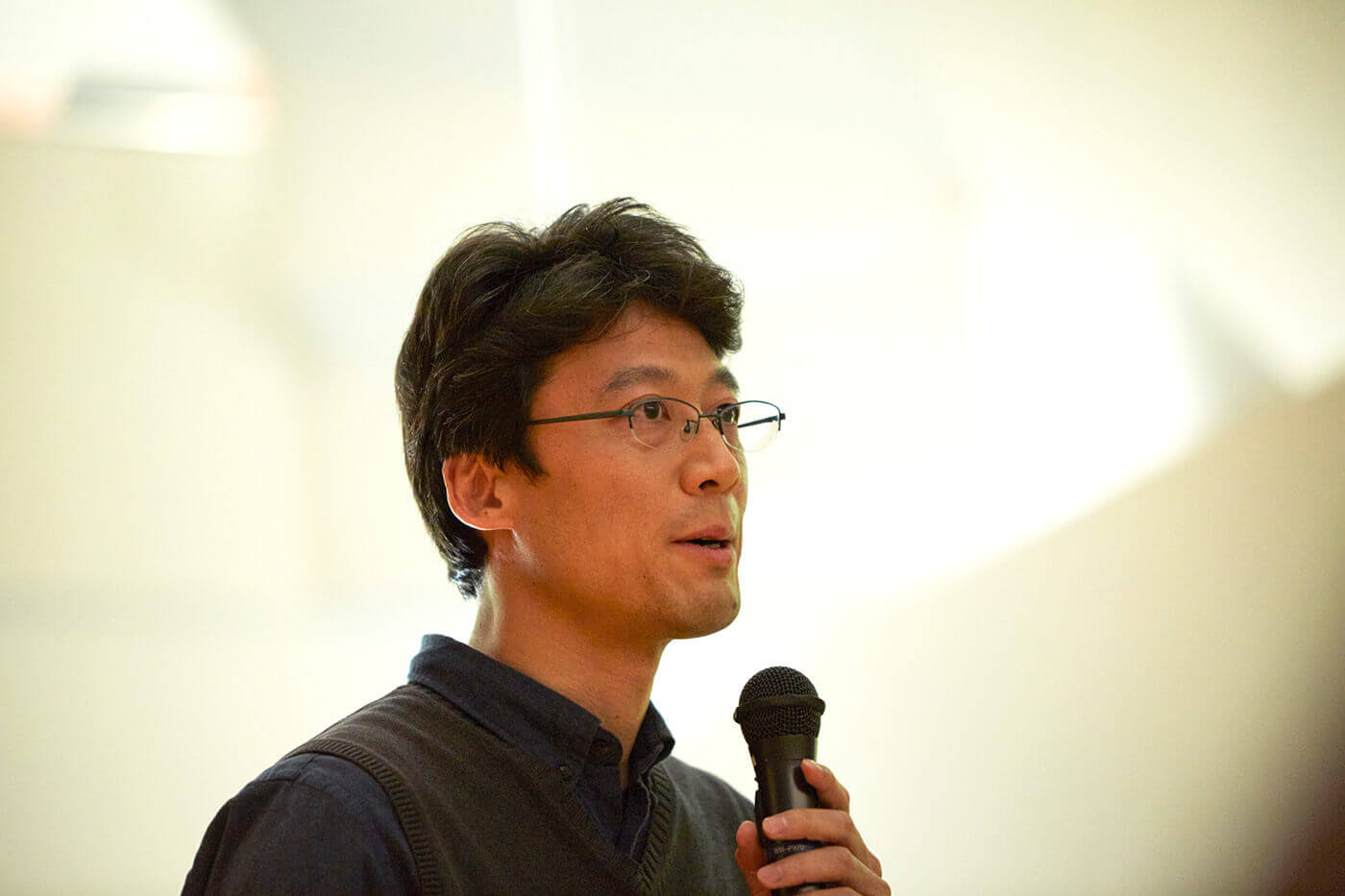
Professor, Faculty of Pure and Applied Sciences at the University of Tsukuba and CEO of Priways Co., Ltd. He graduated from the Department of Chemistry, School of Science, Osaka University in 1998, completed a master’s course at the Department of Chemistry, Graduate School of Science, Osaka University in 2000, and a doctoral program from the same school in 2003. He was a JSPS research fellow from 2002 to 2005 and a JST researcher from 2005 to 2010. After becoming Associate Professor in the Faculty of Pure and Applied Sciences at the University of Tsukuba from 2010, he took on his current position in 2018. He is currently advancing research in the development of luminescent and laser materials and the self-organization of organic compounds and polymers. He is also involved in international cooperation and exchange. In April 2018, he set up Priways Co., Ltd., a company that works on technology such as printable electronic circuits.
Yamamoto:”The benefits of sharing research information can be divided into three categories based on target audience: the research industry, the general public, and those within your institution. Sharing information with the industry is connected to appealing to the world, securing funding and peer reviews. Information shared to the general public can promote increased understanding and interest in the university’s research. Within an institution, it helps the laboratory to attract students, increase awareness of activities, and promote the research in question. With that in mind, it is clear that there are a lot more advantages to sharing research than disadvantages.
“This is a list of ways I share information:
① Publish research results in a video journal
② Publish results on the university homepage/press releases (1–2 times a year)
③ Share on Facebook (SNS); publish on the laboratory’s homepage
④ Send to teaching staff and students abroad (to encourage collaborative research with foreign researchers, to present results, for networking)
⑤ Host booths and take part in exhibitions (Nanotech 2019 exhibition, Gift Show, etc.)
⑥ Business ventures
Looking back on the information distribution I’ve done, it’s easy to see the merits of getting people involved. The value of your research is determined by other people, so you must appeal to them through as many channels as possible or be prepared not to be chosen.
“The important thing is to not just stop when you feel a sense of self-satisfaction with your research. If you take the time to consider the extent your research is influencing people, you can expand this field of influence beyond your own circle and reach the research industry. From there, it could also go on to reach the general public. You can always ask for help if you’re stuck or confused.”
──Yamamoto discussed the significance of being aware of your target audience when sharing information. A lot of the researchers must have felt inspired by his words, “There are only merits in sharing information.”
The next presentation was from the point of view of an editor, who publishes articles in an academic journal. He explained what happens at the kinds of specialist journals so many researchers are hoping to get published by.
Third presentation: Charles Yokoyama (The University of Tokyo; former "Neuron" editor); Getting picked from a multitude of articles
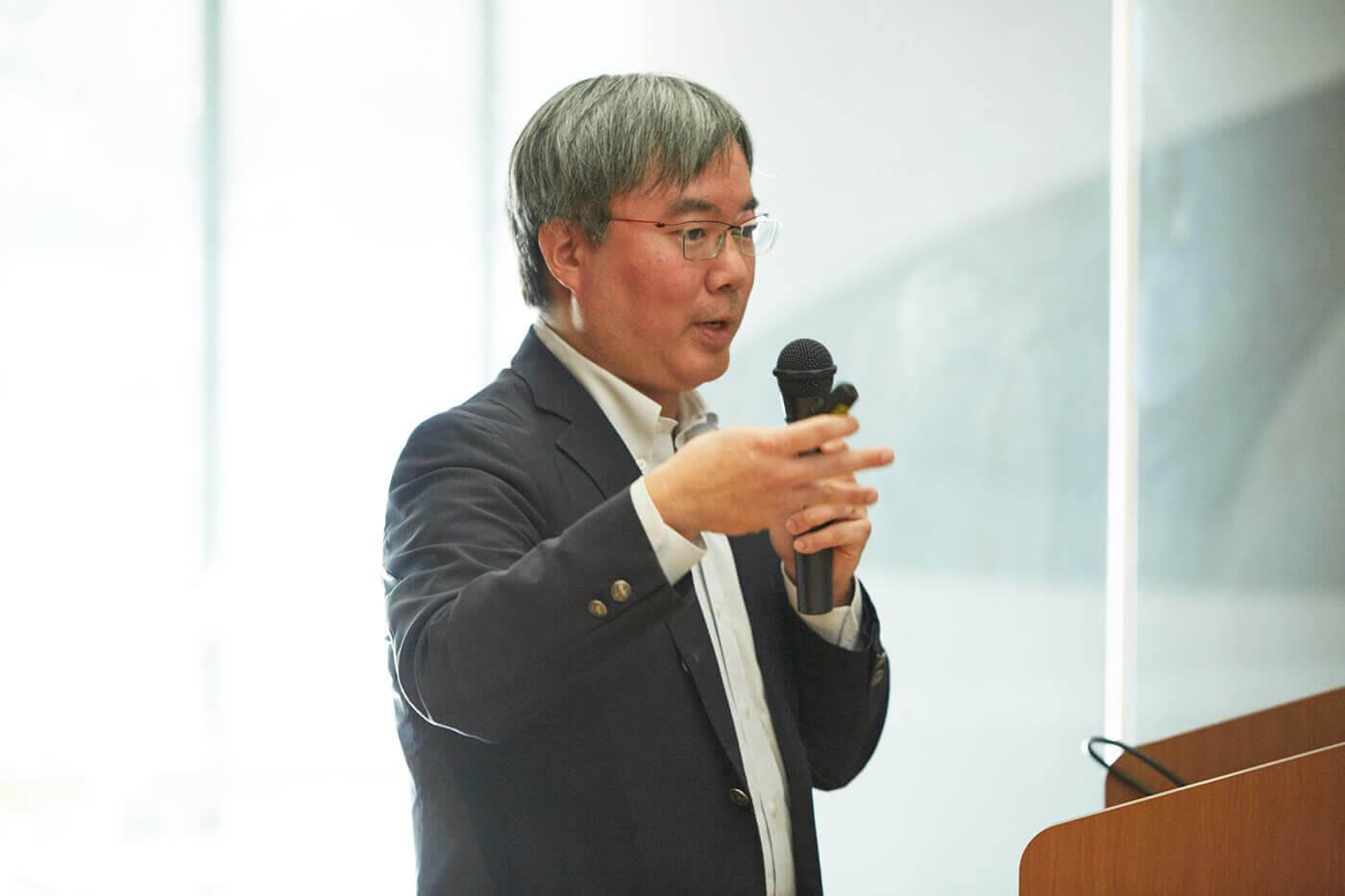
Obtained his BSc (biochemistry) at Michigan State University, his master's degree in biology at the Massachusetts Institute of Technology, and his DSc in neurobiology at the University of Washington, Seattle. He carried out research in voltage gated ion channels at presynaptic nerve terminals, as well as related protein function and regulation. After this, he started a second career as a senior scientific editor for the international journal "Neuron," managing the peer review process for original papers and review articles. Currently, as a research administrator, he offers support and guidance in areas such as business management and science communication and is also putting effort into the creation of research ecosystems to promote team science and encourage interdisciplinary collaborative research.
Yokoyama: “A researcher’s activities are fundamentally very simple; a research cycle of ‘plan a project, collect data, write a report, publish the report, plan a new project.’ There are various stakeholders involved in this process, such as funding agencies, research institutions, and journal publishing companies.
“The difference between an article that has great impact and a normal article is that the former is the starting point for a departure from current levels of scientific understanding and brings about conceptual reform.
“However, there is a tendency for people to place too much emphasis on getting an article published in a high impact journal, which is problematic. There are various factors that should be considered in order to maintain a system that continues to produce high quality science.
“To begin with, what is a good concept for an article? A ‘concept’ is a cognitive unit of knowledge or meaning. Reducing ambiguous language, choosing what kind of data to use, and how you write are all important. Ultimately, you need to write in a way that makes it easy for people to understand what you are saying.”
So, the scientific community develops based on language that anybody can understand. A question about the role of the study arose from Charles’ presentation. It seems that when we consider the transmission of information, we also need to consider, “What is the purpose of study?” Next, Kyoto University’s Miyano posed an even more radical question.
Fourth presentation: Naoki Miyano (Kyoto University); Spreading information, interdisciplinarity, and learning
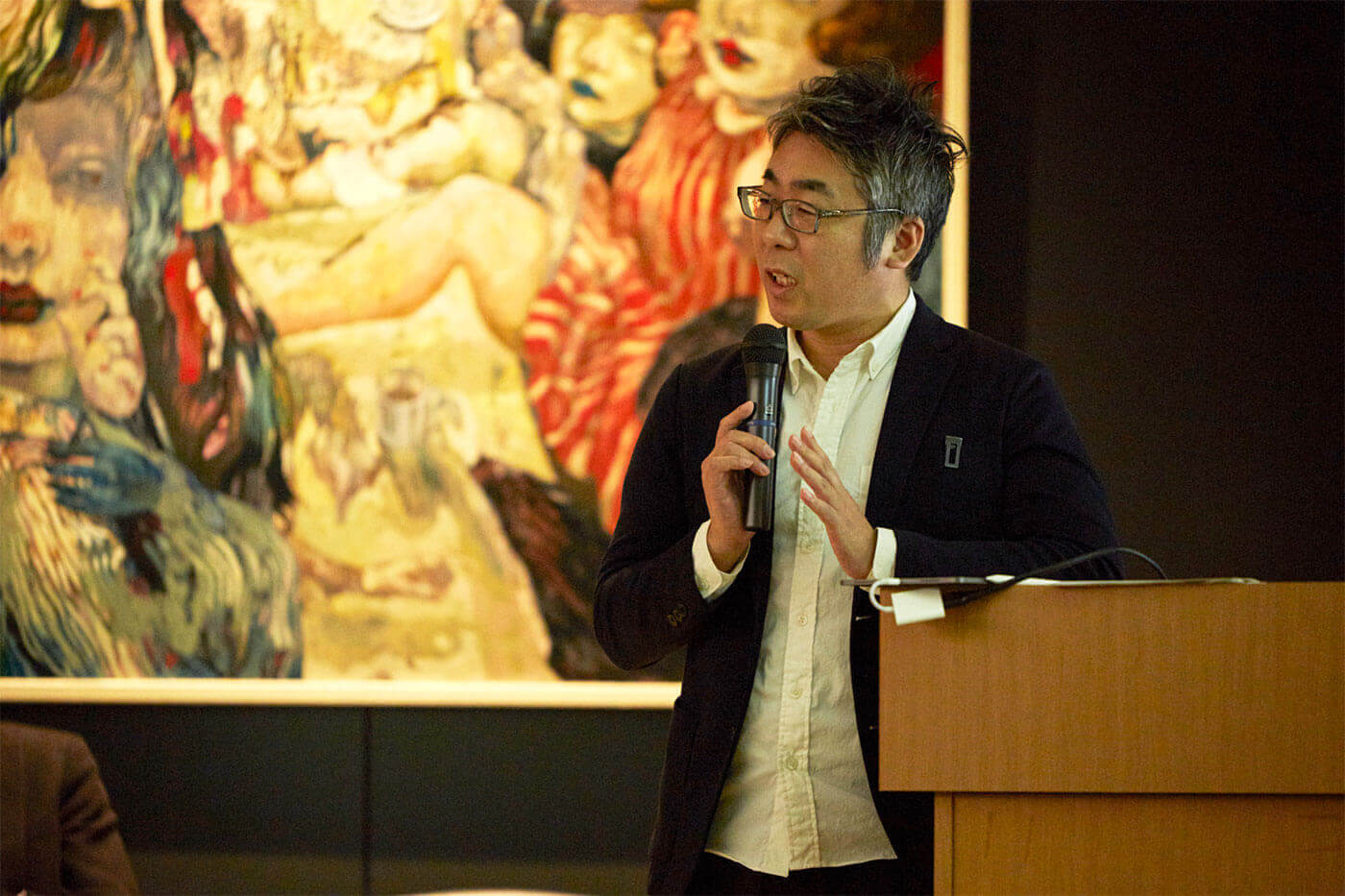
Associate Professor at Kyoto University's Center for the Promotion of Interdisciplinary Education and Research. After graduating from the Department of Mechanical Engineering in the College of Science and Engineering at Ritsumeikan University in 1996, he completed a doctoral program there in 2001. He was a research fellow at Kyoto University Office of Society-Academia Collaboration for Innovation from 2010 and began his current position in 2011. By creating a space within the university for free thought and practice, he is involved in experiments that connect different fields. He has authored books such as "Five Questions to Deepen Your Research" (Kodansha), "Interdisciplinarity: Doing and Thinking" (union.a), and his latest publication, "A Letter From Learning: Thinking That Withstands the Test of Time" (Shogakukan).
Miyano: “In the previous presentations, someone said they want to do researcher training, and I think that the university is just the place for researchers to devote themselves to study. What I do is often labeled as ‘promoting communication between researchers’ and ‘coordination,’ but that isn’t my intention at all.
“Of course, our monthly ‘Dinner Party to Promote Multidisciplinary Research’ and our ‘Interdisciplinary Research Idea Contest’ are open to those across all fields. The important thing, however, is that the researchers can take part in stimulating scholarly discussions that allow them to share their research outlook and that they can continue to do so. It becomes a place where researchers who want to help each other improve can gather.
“I clearly differentiate ‘research’ from ‘learning,’ and while sharing information is probably essential to research, it does not matter when it comes to learning. In brief, I would say that for information transfer to occur as an end result, one needs to first try to improve the information they ought to convey.
“For that reason, researchers themselves need to be aware of why they are doing their research, what they are trying to do, and what they are doing to that purpose. Therefore, this kind of reflection and dialogue is very important.”
──In response to the point raised about the importance of constantly considering what one should be doing, a number of people from the floor offered their own perspectives on learning. As the nature of study evolves, the gravity of the question, “What should I be thinking about?” seems to be shared among all researchers.
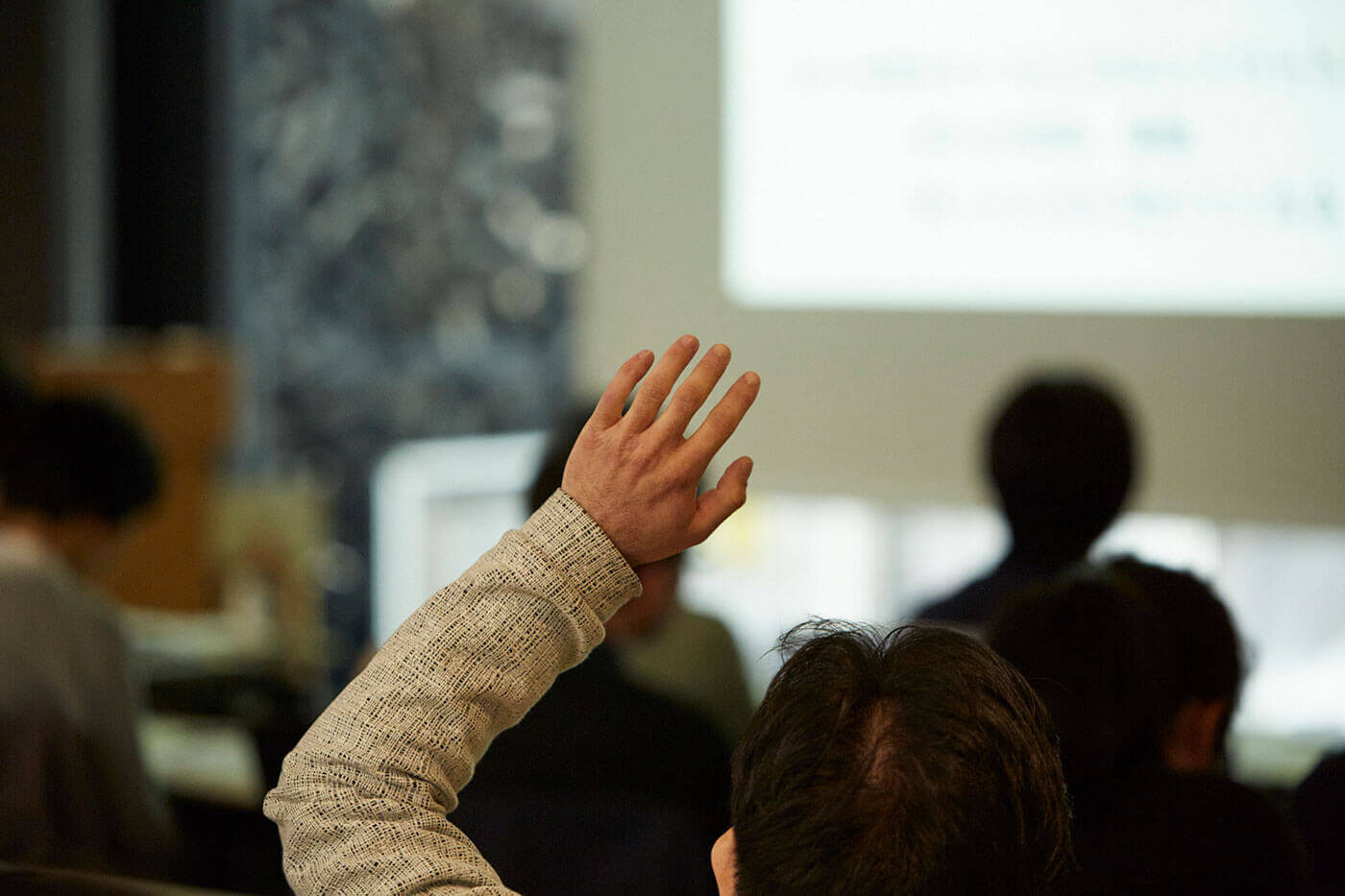
The next presentation was about technology investment ecosystems. The talk touched on researchers’ information distribution and the potential for collaboration with businesses from a perspective outside academia.
Fifth presentation: Tetsu Nakajima (CIO of Mistletoe, Inc.); How to change the world with your research
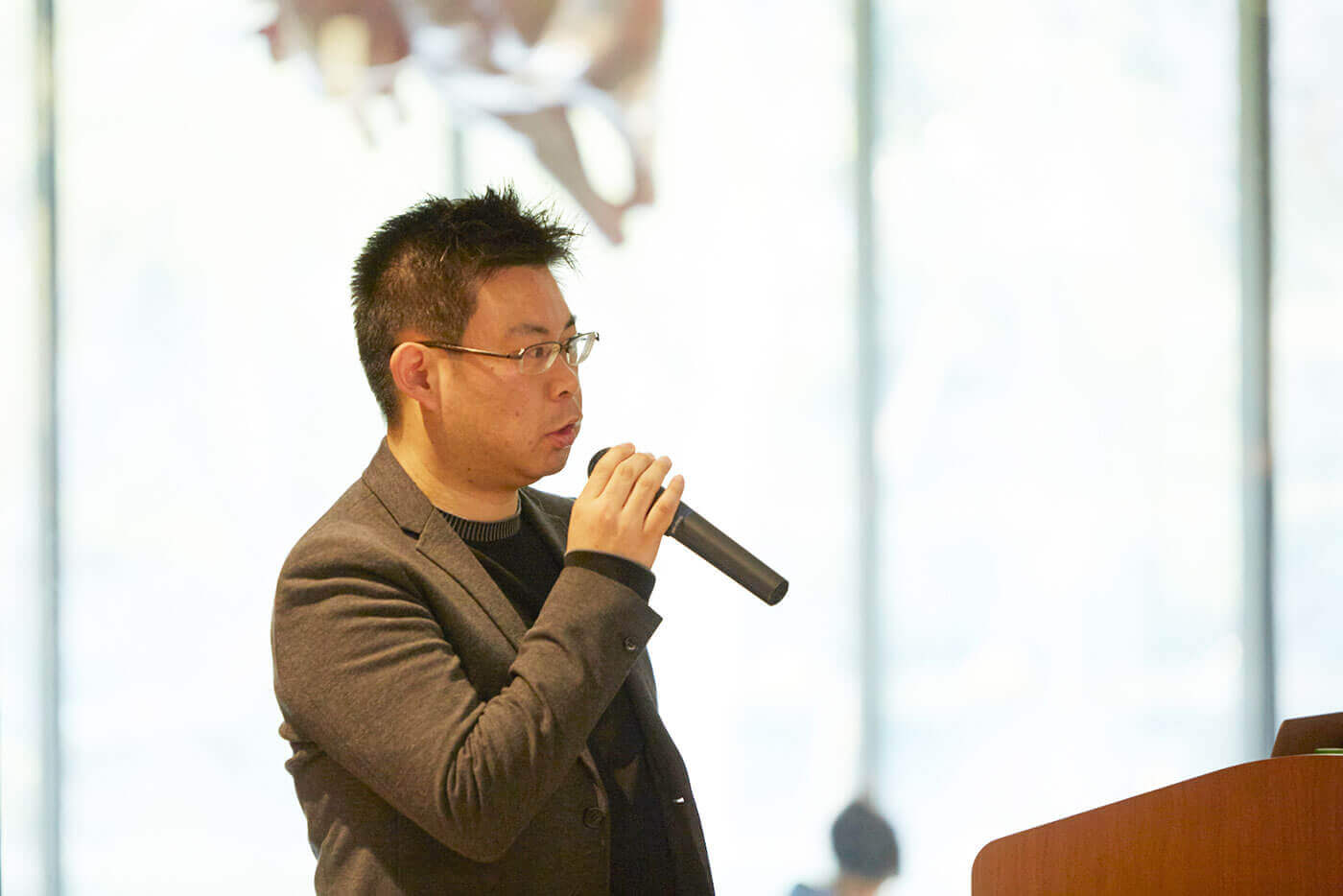
After joining Toshiba as part of its Corporate Research & Development Center, he became involved in wireless communications research, standardizing wireless LAN to international standards, and semiconductor chip development, acquiring dozens of patents. From 2009, he took part in planning the Innovation Network Corporation of Japan, and as a venture capitalist, has invested in Japanese and Silicon Valley (USA) robotics, IT, and software, including WHILL and INNOPHYS. Making the most of his engineering experience, he has made hands-on commitments to improving the results of companies he invests in, getting Nakamura Choukou listed on the stock exchange and the sales of several startups. In 2016, he participated in the creation of Mistletoe and became its Chief Investment Officer in November 2017, supervising investment activities across all 14 countries.
Nakajima:”At the moment, as well as investing as a venture capitalist, I am involved in a variety of activities to promote the expansion of startup ecosystems, for example, setting up the Japanese hub of the NPO Hello Tomorrow, which started in France. It’s a community which connects researchers, entrepreneurs, and investors involved in deep tech to implement innovative technologies in society. I run events that introduce deep tech in the hopes of encouraging startups that deal with cutting edge technology to bring about disruptive innovation in Japan.
“In the first place, deep tech is based in scientific research, and while it takes time and money, it can have a great impact. I would like Japanese ventures and projects that originate in Japanese universities to secure investments and go on to change the world. There have been past success stories in Japan such as the Walkman and VHS. Moreover, these precedents did not come from startups, but normal businesses. Looking back, the main factors that contributed to their success were probably that they had angel investors within the company, took the initiative in creating platforms (standards), and furthermore, had the help of creative engineers.
“I believe that Japan is currently in need of startup and studio-like structures. Connecting deep tech, universities, and large companies makes it possible, with the help of those companies’ researchers, to turn research that would be hard to share with the world otherwise into a more shareable format. By doing this with startups, they are connected to foreign investors. It might also be beneficial to create a structure that involves giving pitches and presentations in English, helping to secure funds from overseas and becoming active on a global scale.”
──In order for research to change the world, there needs to be an ecosystem where knowledge can take flight. For that reason, connections outside of academia, such as to businesses and investors, are indispensable. In the ensuing discussion, there was more talk of funding, a constant companion to research. The following is just a part of the discussion.
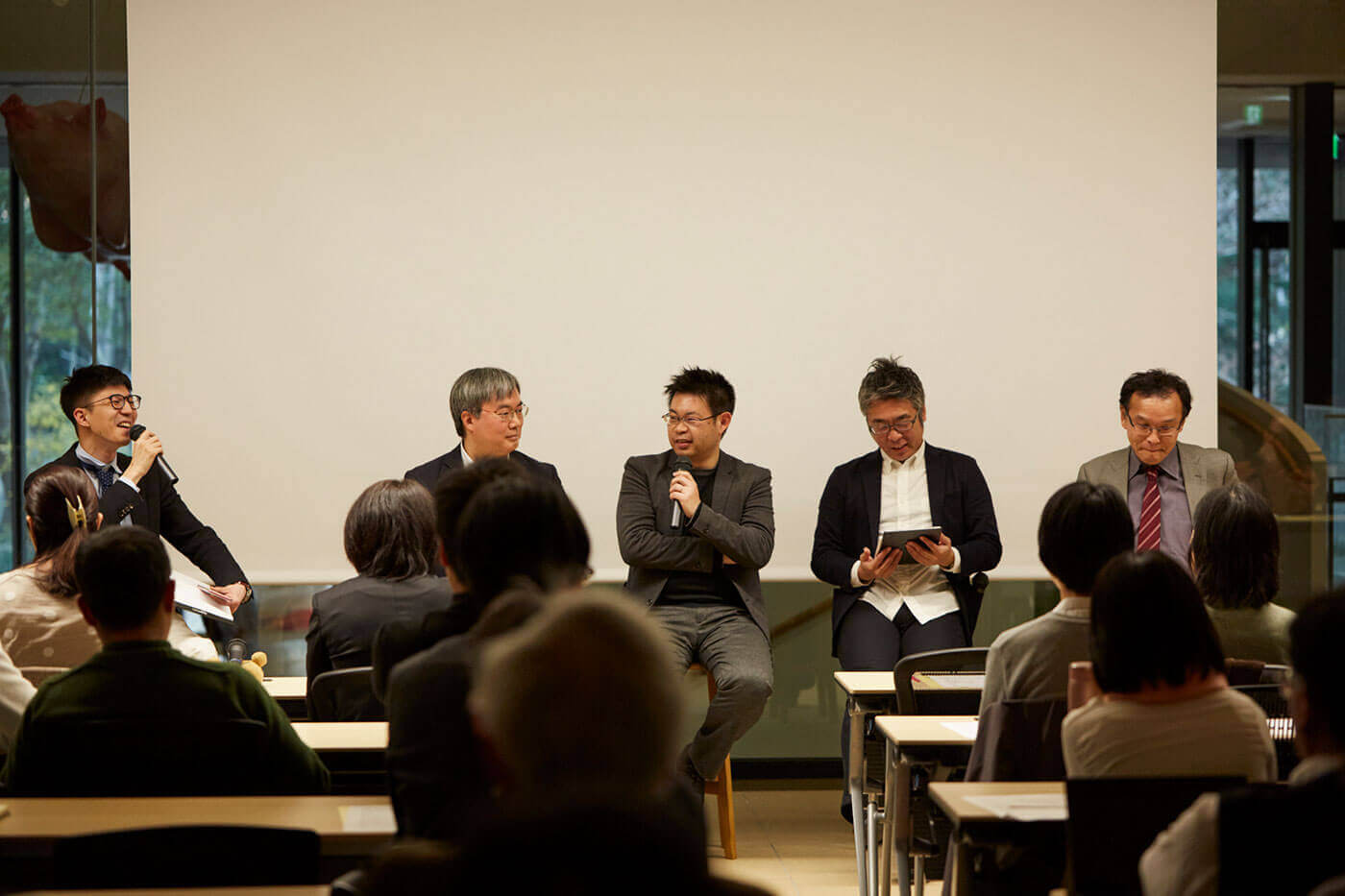
──First, Yokoyama pointed out the need to balance public funding and funding from businesses.
Yokoyama:”In my field, we get little investment from companies, and 90% of our research is publicly funded. Of course, it would be better to increase funding from businesses, but ethical guidelines are crucial. In addition, investments also need to be distributed. Duplicate budget provision for the same research should be avoided, and we should switch to a system made to spread knowledge.”
──Next, Nakajima explained the difference between researchers and the startups they should begin collaborating with.
Nakajima: “The sentiments of researchers and entrepreneurs are similar but different. ‘Changing the world,’ to an entrepreneur, signifies putting their activity out into the world above all else. On the other hand, a researcher might carry out their work based on pure curiosity, without any particular desire to share it with society.”

──The topic gradually expanded to wider themes as an attendee from the floor pointed out that researchers have responsibilities beyond sharing information.
Attendee: “We heard today that sharing information is important for researchers, and that we should think carefully about why that’s necessary. Sometimes it’s necessary to put the brakes on research that will have decisive results. For that reason, when it comes to research, perhaps the ability to take in information is more important than being able to share information, and we need to examine how to react to research results, the ethical considerations, and our responsibilities as researchers.”
──To begin with, what is the meaning of communicating research? Miyano said that even the researcher’s “way of life” is connected to this.
Miyano: “Why does a person find their research interesting? To understand, I believe one should think about their way of life leading up to this point, consider all questions on a meta-level, and have discussions with outsiders.”
──The discussion expanded from talk about research and funding to the subject of the researcher’s attitude to life. Questioning who to share information with is the same as questioning the state of researchers themselves. How do we best support the thoughts that lead them to this point? This is probably a question for the URAs to tackle.










